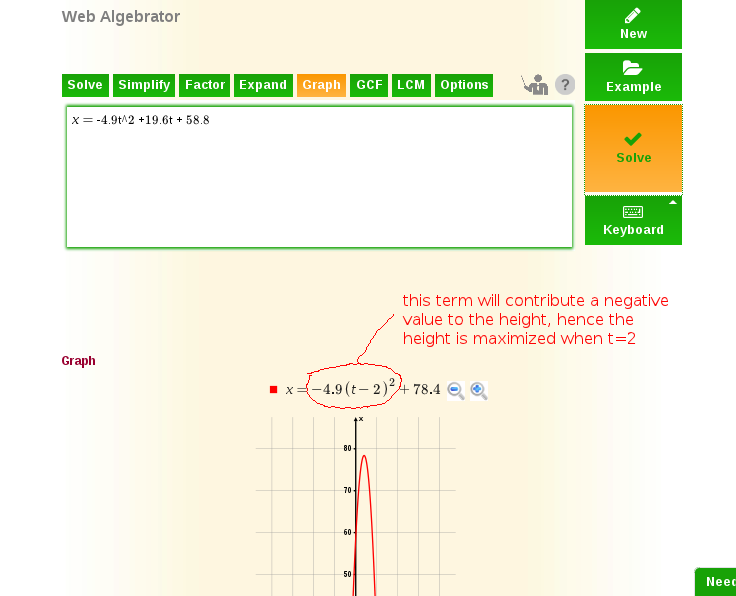Problema Solution
An object is launched at 19.6 m/s from a height of 58.8 m. The equation for the height (h) in terms of time (t) is given by h(t) = -4.9t2 +19.6t + 58.8. What is the object's maximum height?
Answer provided by our tutors
This is simply solved by transforming the equation into its standard form. The negative term will continually lower the height and its effect is seen when t=2. Equations provided using functional notation should be entered without the functional notation because syntactically "h(t)" is equivalent to "the variable h multiplied by the variable t, in parentheses". So we replace "h(t)" with a single variable, simply chosen as "x".
x= -4.9t^2 + 19.6t + 58.8
transform the equation into a standard form
-4.9(t-2)^2 + 78.4
When t=2, "-4.9(t-2)^2 equals zero, leaving a maximum height of 78.4.
